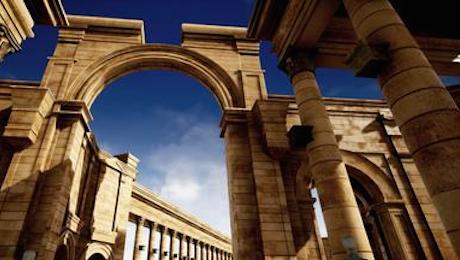ANCIENT PALMYRA IN 360° AND 3D

Before the eyes of the international community, the UNESCO World Heritage Site of Palmyra in Syria suffered severe damage. In a sophisticated virtual reality project the "queen of the desert" was digitally reconstructed. Now the cultural heritage of the Syrian people can at least be experienced virtually again.
The UNESCO World Heritage Site of Palmyra in Syria has attracted attention for tragic reasons in recent years. Before the eyes of the international community, the historically important oasis city suffered severe damage. The ruins of the ancient city of Palmyra first came under fire in 2013 during battles between rebels and government troops. Numerous buildings were badly damaged. During the Syrian civil war, in 2015, Palmyra was subjected to further systematic destruction. In a sophisticated virtual reality project the "queen of the desert" was digitally reconstructed. Given the current political situation, reconstruction of the actual site may still be a long way off. But thanks to its digital reconstruction, the cultural heritage of the Syrian people can at least be experienced virtually again. The first of three 360° films showcases the most important meeting places in ancient Palmyra: the Agora and Roman theatre. This is where thousands of spectators were entertained − with comedies and romances but also bloody spectacles such as gladiator fights and animal hunts. Part Two looks at the famous Colonnade, Hadrian's Arch, Temple of Nabu and Baths of Diocletian. The thermal baths provided a standard of bathing comfort equal to that enjoyed by the citizens of Rome. The third tour focuses on Palmyra's most famous shrine, the Temple of Bel. Its extraordinary mix of styles, which blends Greek-Roman and Oriental elements, is unique.
Tour 1: Agora, Roman Theatre and Tetrapylon
Tour 2: Colonnade, Hadrian's Arch, Temple of Nabu and the Baths of Diocletian
Tour 3: Temple of Bel